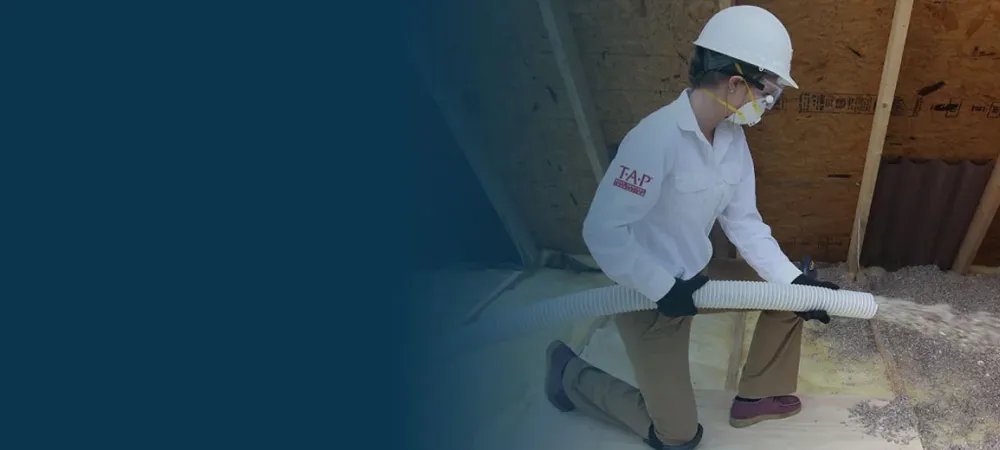Why Is Attic Insulation Important For Your Home?

How often do you venture into your attic? It's definitely not the most attractive room in our homes, usually covered in dusty spider webs, old furniture, and photo albums. It's not until we need to bring down old Christmas decorations or hear a noise above that we even remember it's there.
But inside the attic, most of us have what is called insulation. Its job is to help keep the air inside the home in and the air outside the home out. But what are the different kinds of insulation, which types are the most efficient, and can they be a deterrent and stop unwanted pests? the bugman answers all that and more, so stay tuned and read on.
Types of Attic Insulation
There are different types of insulation you can utilize for your home and each of them have their benefits, as well as their disadvantages. When choosing the type of insulation you need, make sure to understand the climate you are in, as well as the structure of your home. Different types of insulation include:
Cellulose
Cellulose insulation is a type of loose fiber insulation made from recycled paper, cardboard boxes, and other commonly discarded materials. Usually, it is heavily treated with chemicals that are not only fire retardants but effective deterrents to pests. Cellulose insulation has both good and bad components. Let’s dive into what they are.
Cellulose Insulation Pros
- Cellulose insulation uses recycled materials that would otherwise find their way into landfills.
- Making it even more eco-friendly is the fact that it is biodegradable. After its lifespan, it naturally decomposes.
- It also doesn’t use any greenhouse gasses as propellants.
- Cellulose insulation is quite dense, making it great for soundproofing.
- The chemicals used in cellulose insulation can help provide resistance to mold, pests, and fire.
Cellulose Insulation Cons
- The biggest downfall to using cellulose insulation is its slow absorption of water. While high humidity levels shouldn’t cause any problems, a leaky roof or burst pipe could cause major dilemmas. Its inability to dry fast can cause it to deteriorate faster.
- Once cellulose insulation does absorb water, it loses its ability to remain fire-resistant.
- Densely packed cellulose can spill into the house through openings in the wall cavity.
- Some of the cellulose dust can be recirculated through the air in the house.
Fiberglass Batts
Fiberglass batts are the most common type of insulation used in American homes because it is quick, easy to install, and highly affordable. It consists of extremely fine glass fibers woven together and built into small particles. These fibers trap air pockets and limit the amount of air that comes into a home. Like cellulose insulation, fiberglass batts also have their advantages and disadvantages. They are:
Fiberglass Batt Pros:
- Fiberglass insulation can significantly help reduce heating and cooling bills.
- Fiberglass acts as sound-absorbing material blocking out noise from outside the home.
- Because it's made from recycled glass and sand, fiberglass insulation is a natural fire retardant.
- Fiberglass batts are made of almost 30% recycled materials, making them environmentally friendly.
Fiberglass Bat Cons:
- Fiberglass batts are not as effective as other types of insulation against leaks. This means you may need to factor in additional ways to create an airtight seal.
- It’s also not as effective in preventing water from getting in. Moisture from leaks can contaminate fiberglass insulation and lead to mold and mildew problems.
- Since most fiberglass panels come pre-cut in odd shapes, it can be difficult to install them.
- Fiberglass batts are not typically an effective deterrent against pests.
Loose-Fill Fiberglass
Loose-fill fiberglass is insulation made of fibers blown in and spread over the attic floor. It contains billions of microscopic air pockets created by these fibers, which slow down the movement of airflow that travels through the insulation. Let’s take a look at what makes this option good or bad.
Loose-fill Fiberglass Pros:
- Great for attics with lots of small, hard-to-reach areas.
- Materials can be easily blown into cavity walls.
- Less costly.
- It can be treated to become fire retardant and pest resistant.
Loose-Fill Fiberglass Cons:
- It can compress over time, losing effectiveness.
- The dust can create a huge mess during installation.
- Most types of loose-fill are susceptible to the absorption of water.
- Loose-fill is more susceptible to pests.
- It often requires additional venting and an air seal.
Spray Foam
Spray foam insulation is typically polyurethane and comes in two forms, open-cell, and closed-cell. It expands when sprayed onto a hard surface, filling in the most hard-to-reach and odd-shaped areas, including cracks, gaps, and crevices.
There are many benefits to using spray foam, including:
- Because it expands to fit inside every crack and crevice, spray foam stops air from leaking in or out, significantly lowering your energy costs.
- It prevents and stops drafty air.
- Spray foam is one of the most effective types of insulation for sound reduction.
On the flip side, there are several downfalls to using spray foam.
- It is more costly than other forms of insulation.
- It contains polyurethane which has been noted as causing some people upper respiratory issues such as asthma and coughing.
- Spray foam insulation can sometimes shrink.
- If cavities are not reached by installers, the risk for water damage increases.
Why is Attic Insulation Needed?
Attic insulation is a material used inside open spaces and gaps to help limit air movement within. It serves as a barrier between the conditions outside and your desired temperature inside, which here in southern California can get pretty hot. Surprising to most, it can also help prevent and keep out pests. There are many beneficial aspects to having your home insulated, some you may already know and some you may not. Here are some of the better advantages:
Heating/Cooling Your Home
Insulation plays a huge role in keeping your home comfortable. Homes with poor insulation tend to be drafty, causing your heating and cooling system to work extra hard. An HVAC system that works overtime will need more routine maintenance and wear out its time before it should. But a properly installed insulation system will help reduce your family’s reliance on your home heating and cooling system.
Saving Energy
Heating and cooling costs account for a huge percentage of energy used in an average home. Because any changes in your home’s temperature must be fought against by your heating and air conditioning units, gaps or spaces in the home can make it more vulnerable to energy costs. According to the U.S. Department of Energy, an average homeowner can save up to 20% on home heating and cooling costs by adding insulation.
Pest Prevention
Did you know attic insulation can also help to deter pests? Those noises you heard may have been from rodents such as mice, rats, squirrels, or insects such as ants or termites. These critters need warmth in the cooler months and air in the heat just like we do, and they will make a home in your humble abode if you don’t have preventive measures to stop them. Insulation fills in the space in your attic, as well as all the cracks, holes, and crevices stopping these creatures from building nests and calling them home.
When it comes to keeping pests out, certain insulation types work better than others. Cellulose, the type of insulation we use at The Bugman, and loose-fill fiberglass keep rodents and pests away more than other types of insulation because their loose materials tend to fall in on themselves. This makes building a nest quite hard. Cellulose also contains boric acid, which naturally repels pests.
Keep in mind, however, that regardless of what kind it is, insulation should be redone if it is damaged or wet from moisture or mold. Damaged or old insulation will not prevent or deter pests and loses its ability to keep in and block out air.
Dangers of Pests In Your Attic
Due to their scarcity of use, dark, cramped corners, and high humidity, attics make the perfect environment for a variety of pests. Some of the most common here in Southern California include:
- Termites
- Rodents
- Bats
- Snakes
- Stinging Insects
- Cockroaches
- Spiders
- And More!
Having pests living in your attic is dangerous on many levels. Here are just some of the few:
- A few, such as termites and squirrels, will chew and gnaw through your walls for better access to your home, where they create nests for their next generation.
- Rats, mice, and bats leave droppings and other fecal matter that can contain bacteria and diseases. The droppings that bats leave have a distinct horrible smell, and contamination can lead to diseases like histoplasmosis.
- Bees and wasps both sting. Wasps can sting multiple times, and while most people only suffer a minor reaction, those who are allergic.
- While cockroaches do not harm us, they can carry pathogens that may cause disease. They also produce a protein that can prompt allergic reactions in many people, including asthma.
- Most spiders are harmless. However, there are a few species that carry venom. They are also creepy looking, and most will bite if they feel threatened, causing red, itchy welts much like a mosquito.
Professional Attic Insulation
When it comes to attic insulation and pest control, look no further than the professionals at the bugman. Our EPA-registered attic insulation is a cellulose type of insulation that is not only environmentally friendly but deters and controls pests.
With over 60 years of experience offering exceptional pest control in Southern California, we can help you stay one step ahead of bugs and your bills. Request your estimate today or give us a call at 714-406-4949.

